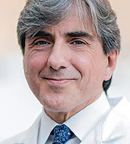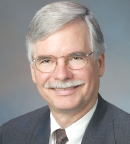What was an MBA doing at the podium of a clinical oncology meeting? Ten years ago or so, that might have been surprising. But in an era of rapid change—in therapies, costs, payment models, and practice—it only makes sense. Amy Porter-Tacoronte, MBA, Health System Chief Administrative Officer at the Sidney Kimmel Comprehensive Cancer Center at Johns Hopkins, spoke at the National Comprehensive Cancer Network’s® (NCCN’s®) Policy Summit on Challenges and Opportunities to Address Changing Paradigms in Cancer Care Delivery.
Her talk addressed one of those changing paradigms—the delivery of coordinated, team-based care—as she described a management strategy that facilitates timely organization and execution of clinical decisions on treatment and testing but also monitors the outcomes of team-based care. “Administration is the glue that holds care and coordination together,” she said in an interview. Ms. Porter-Tacoronte believes formalized documentation and communication of policy purpose and procedures (including roles and responsibilities) are the key to continuous evaluation and improvement of the cost and quality of care. “It’s a very different way of looking at the role of policy—not just to address regulatory requirements but to facilitate care.”

Administration is the glue that holds care and coordination together.— Amy Porter-Tacoronte, MBA
Tweet this quote
It is also an approach that has evolved in response to the rapidly changing landscape of cancer-care delivery. That landscape was the focus of the NCCN summit and of a report from an NCCN working group charged with identifying “policies that accurately reflect the reality and challenges of cancer-care delivery and practice.”

Leonidas C. Platanias, MD, PhD

Warren Smedley, MSHA, MSHQS
At the meeting, the working group co-chairs—Leonidas C. Platanias, MD, PhD, of the Robert H. Lurie Comprehensive Cancer Center of Northwestern University, and Warren Smedley, MSHA, MSHQS, of the University of Alabama at Birmingham Comprehensive Cancer Center—reported preliminary findings and recommendations in four areas: delivery of innovative therapies; delivery of care under value-based payment models; team-based coordination of cancer care and scope of practice; and shortages and diversity in the cancer-care workforce.
Innovative Therapies
The high cost of innovative therapies, such as precision medicines, immunotherapies, and chimeric antigen receptor T-cell therapy, is not only a major issue in cancer-care delivery, but it also contributes to what keynote speaker Lee Newcomer, MD, identified as a

Lee Newcomer, MD
critical issue at the national level. Medical costs in general—and of what could be called the medical-industrial complex, he said—now make up a large portion of the U.S. gross domestic product. “We’ve got a crisis,” said Dr. Newcomer, a medical oncologist and former executive at United HealthCare. “I think it’s solvable, but we have to take action.”
In this area, the working group recommended policies that could protect patient access to these high-cost, high-impact treatments, including development of the following items:
- Value-based payment mechanisms to reimburse costs outside bundle payments
- Modernized reimbursement systems to accommodate novel therapies and advanced diagnostic tools
- Standards, tools, and evidence-based guidance for the delivery of innovative therapies that include standards around scalability of efforts if safe and appropriate
- Dissemination mechanisms for the delivery of novel therapies in the community and promotion of the importance of local availability
- A framework or guidance document for evaluating the clinical utility of emerging precision medicine biomarkers and clinical indications.
The working group also addressed the ongoing issue of regulation of laboratory-developed tests. It recommended that the U.S. Food and Drug Administration (FDA) develop policies or guidance documents to address administrative burdens, costs, advantages, and limitations related to the submission of laboratory methods to the FDA for clearance/approval, including circumstances where such submission may be warranted. A related recommendation calls for a policy publication on the current landscape of regulation of laboratory-developed tests, including coverage policy, method interoperability, and clinical utility standards.
Value-Based Payment Models
High-cost therapies pose a special challenge under value-based payment models that include bundled payments, such as the Oncology Care Model of the Centers for Medicare and Medicaid Services (CMS). Here, the working group’s first recommendation was development of a special mechanism to reimburse high-cost therapies within value-based payment models. Other recommendations related to streamlining the administration of value-based payments include the following:
- Supporting greater interoperability of electronic health records
- Developing standardized metrics and a shared definition of value in collaboration with providers and patients
- Providing greater transparency through the availability and exchange of claims data from the CMS and private payers.
The availability of claims data from payers, which would provide real-world evidence on patient outcomes (as opposed to clinical trial outcomes), is an ongoing topic of discussion in the oncology community. Obstacles include proprietary issues and privacy regulations. The working group recommended development of “guidance documents regarding regulatory hurdles that might prevent the sharing of meaningful claim information.”
Team-Based Coordination of Care
Integral to the management of value-based care and bundled payments is coordinated, team-based care. Although cancer centers have had multidisciplinary tumor boards and clinics for many years, what is evolving now is something new, said Robert W. Carlson,

Robert W. Carlson, MD
MD, NCCN’s Chief Executive Officer. Coordination now involves a greater number and variety of active participants, he said, including, for instance, social workers, geneticists, and pharmacists; in addition, team meetings now tend to be “more pervasive, more frequent, and often in person.”
In her talk on managing care coordination, Ms. Porter--Tacoronte characterized this new face of team-based care as “holistic and multidisciplinary.” And it has a very specific goal, she added, which is “to get the right patient to the right care at the right time.”
The challenge is that there are so many stakeholders. The key is to get groups together.— Warren Smedley, MSHA, MSHQS
Tweet this quote
At the core of team-based care at Hopkins is the clinical oncology social worker (key functions: psychosocial care delivery and care coordination), who is a critical member of daily 15-minute meetings, known as huddles. These quick, stand-up meetings include a download on patient status, followed by discussion and agreement on next steps as well as who should handle them. Huddles occur on a regular schedule, with one member, ideally, recording assigned action steps. With the focus on discharge and readmission prevention and minimizing patient financial toxicity, the degree and depth of assessment, engagement, intervention, and follow-up vary widely and should engage both patients and family members.

Louise Knight, MSW, LCSW-C, OSW-C, FNAP
This strategy, Ms. Porter-Tacoronte said in an interview, was initiated at Hopkins by Louise Knight, MSW, LCSW-C, OSW-C, FNAP, Director of the Harry J. Duffey Family Patient and Family Services Program at the Cancer Center, and it represents a significant culture shift. The multidisciplinary teams were once led by a physician and now follow an interprofessional collaborative practice model. That means members understand not only their own roles, but also how they can help and interact with and support other members, she said. “It becomes a partnership. Everybody has to be a navigator focused on the best outcome for the patient and caregiver.”
NEXT NCCN POLICY SUMMIT
- December 10, 2018 National Press Club Washington, DC
- Patient Advocacy Summit: Advocating for Equity in Cancer Care
- Keynote: Overcoming Disparities: A Case Study on the Navajo Nation
The working group recognized that the changing nature and increasing importance of care coordination is not reflected in current value-based payment models. Two of its recommendations address this issue. First, the Oncology Care Model should be expanded to implement payment models that are considered best practices in the field to promote the delivery of high-quality and high-value cancer care. This effort should include more collaboration among the CMS, the Center for Medicare and Medicaid Innovation, the Physician-Focused Payment Model Technical Advisory Committee (PTAC), and the Department of Health and Human Services; it also should include more technical assistance from the PTAC before and after proposal submissions. Second, reimbursement and coding mechanisms should be established to support team-based models of care.
Shortages and Diversity in Cancer-Care Workforce
To address the need for diverse specialties in team-based care, the working group recommended the development of payment models that include diverse team members, such as community health workers, patient navigators, genetic counselors, and dieticians. Other recommendations in this area include the following:
- Interstate partnerships for licensing recognition for -practitioners
- Policies to reduce and/or shift administrative documentation and reporting requirements
- Addressing workforce shortages through greater telemedicine policies and regulation
- Instituting loan forgiveness programs for practitioners in -underserved communities.
Next Steps?
What can be done now to implement the working group’s recommendations? This question from summit moderator Clifford Goodman, PhD, of The Lewin Group, elicited similar answers from the two co-chairs: more meetings and more collaboration. “The challenge is that there are so many stakeholders,” said Mr. Smedley. “The key is to get groups together.” Dr. Platanias agreed: “We need to work together, taking into account our many different perspectives.” ■
DISCLOSURE: Dr. Carlson, Ms. Knight, Dr. Newcomer, and Dr. Goodman reported no conflicts of interest.

